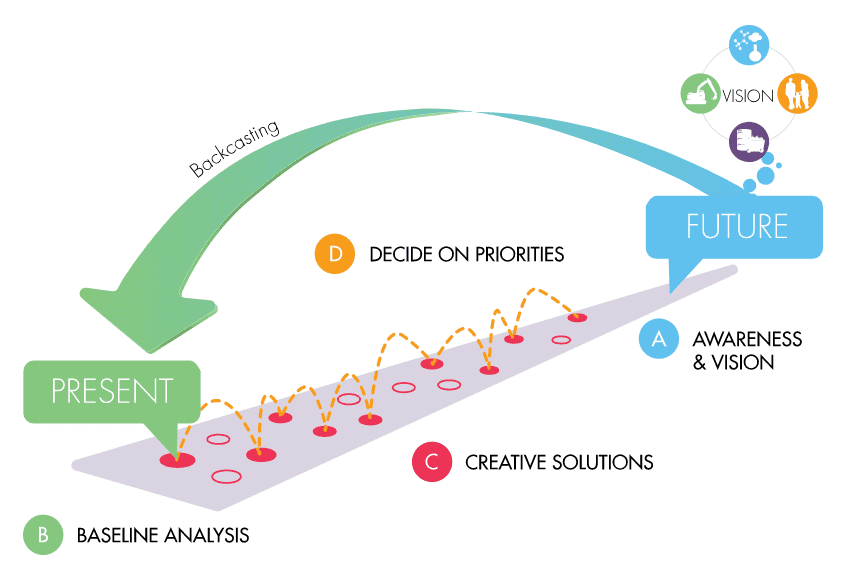This website uses cookies so that we can provide you with the best user experience possible. Cookie information is stored in your browser and performs functions such as recognising you when you return to our website and helping our team to understand which sections of the website you find most interesting and useful.
If we want to contribute to value creation, health, safety, ecosystem survival and human wellbeing, it is important to include them as metrics in our balance sheet.

Martin Rich, FutureFit
“The more you outsource externalities, the better you do financially in today’s system. If companies outsource all harm you never have to account / pay for it.”
Martin Rich, Co-Founder and Executive Director at Future Fit
We need to consider our own operations and also the full supply chain and product life cycle. Only this way can we measure performance indicators in a similar way to financial performance. However, can we ever compare the value of a tree to the value of a mother in monetary terms?

James Vaccaro, Special Advisor to Triodos Bank
“People want to measure everything but it is not always healthy. You can hit the target but miss the point.”
James Vaccaro, Special Advisor at Triodos Bank
Rather than blindly tracking our performance towards a framework like the Sustainable Development Goals, we need a clear idea of the future scenario we want to create as part of our business purpose, a plan on the business’ contribution to this scenario and clear performance indicators on how to get there.
We need a clear understanding of a desired future scenario that is easy to communicate. This provides us with a shared starting point so we can effectively work together on the desirable change. Frameworks like the Natural Step can help us develop such scenarios.

Natural Step Framework
We then need a bold set of processes, tools and practices that help us facilitate action and a clear set of performance indicators that we can measure success on.
There is always the temptation to take off the shelf (ready-made) indicator sets, both for ease as well as comparison with other organisations. However, we would suggest first asking yourself the question: Do these indicators accurately reflect the change that your business wants to achieve?
Much time and energy is wasted collecting lots of data for tick box activities as opposed to measuring whether the change (those activities were designed to achieve) has actually happened.
It is not the amount of training provided but what people do with that training that matters. Measuring impact should not be different from measuring key performance indicators (KPIs). A forward-looking set of KPIs should instead be the impact you want to achieve.
In recent years, alternative return on investment methodologies have emerged to assist businesses in bringing their social and environmental impact into the balance sheet. These can be useful, but only if their limitations (valuing nature, dubious discount rates) are recognised and the data is fed back in a format that enables people to take action. Measuring for measurement’s sake is just not worth it.
Often t the story of how the impact is achieved (rather than the return on investment calculations of the impact) is the most useful information an organisation takes away from such an exercise.
“We can only operate at environmental and social loss for so long, otherwise we will go bankrupt.”
Martin Rich, Co-Founder and Executive Director at Future Fit
Ultimately business needs to find ways to design wellbeing into their economic system and incentivise those actions that have the potential to substantially contribute to positive impact.
- Case study: Tony’s Chocolonely
- This is an extract from the forthcoming ‘The Business of Wellbeing – Alternatives to Business as Usual’ Guide, launching in January 2020. For more extracts, please click here
- To stay informed of the release of each extract, please sign up to our newsletter here.
the discussion?
Let us know what
you would like
to write about!

